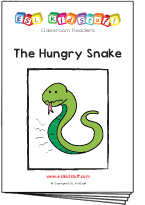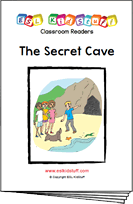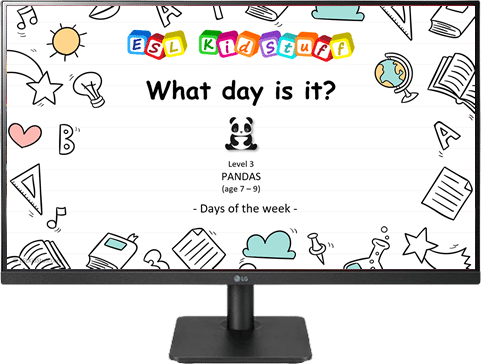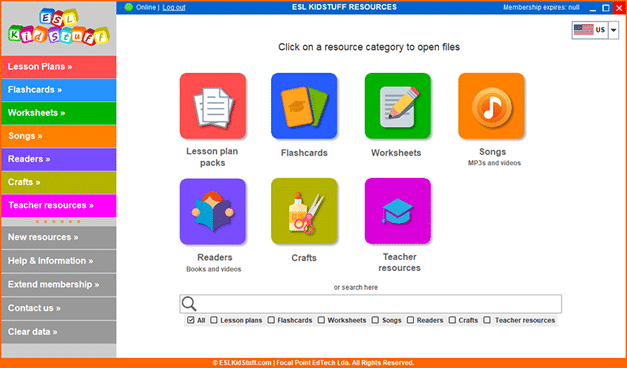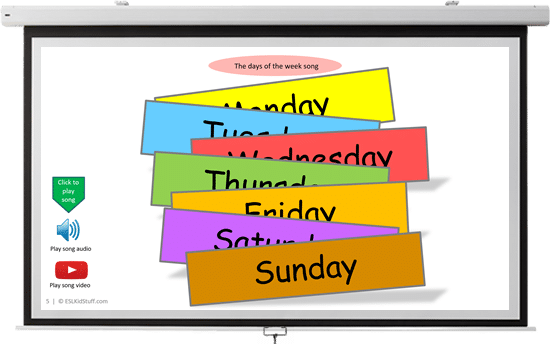Likes and dislikes 2 lesson plan
“Do you like cheese?”
Lesson 5 Level 3 Age 7-9
Lesson plans for ESL kids teachers
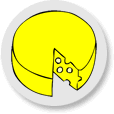
Lesson 5
Likes and dislikes 2
This lesson plan continues with the theme of giving your likes and dislikes for different food items. Students play a board game, read a story and create a likes and dislikes poster.
Members get accompanying worksheets, board game sheets, homework sheet, flashcards and reader.
Materials:
Our lesson plans are FREE!
Sign up for accompanying:
✔ worksheets
✔ homework sheets
✔ craft sheets
✔ flashcards
✔ PowerPoint lessons & multimedia
✔ song downloads & videos
✔ classroom readers & videos
Click to see lesson details, materials and supplies
Age: 7-9 years
Time: 1 hour – 1 hour 20 mins
Objectives: Talking about likes and dislikes for food, asking yes/no questions about likes and dislikes.
Structures: “I like ~”, “I don’t like ~”, “Do you like …?”, “Yes, I do.”, “No, I don’t”.
New vocabulary: [hide_on_uk]cookie[/hide_on_uk][hide_on_us]biscuit[/hide_on_us], peas.
Review vocabulary: cheese, chocolate, rice, French fries, strawberries, bread, ice cream, grapes, pasta, pizza, beans, apple, orange, carrot, banana, pineapple, corn, cabbage.
Lesson materials
Flashcards:
- Food (cheese, chocolate, rice, French fries, strawberries, bread, ice cream, grapes, pasta, pizza, beans, apple, orange, carrot, banana, pineapple, corn, cabbage)
Printables:
- Do you like …? worksheet
- The hungry snake – reader worksheet
- Do you like questionnaire worksheet
Readers:
- The hungry snake
Supplies:
- name tags for each student
- a small ball
- supermarket magazines (with lots of food pictures)
- A3 paper or construction paper to stick the magazine pictures on (1 sheet per student)
- dice (enough for each group of 3 or 4 students)
- board with markers / chalk
In this lesson students will practice asking and answering yes/no questions about food likes. They play a board game, read a story and create a likes and dislikes poster.
Lesson procedure:
Warm up and maintenance:

1. Greetings and name tags
Greet the students as they enter the classroom and gesture for them to sit down. Before class prepare some blank name tags (stickers or pin-on tags). Give these out and have everyone write their names and put their tags on. If you use pin-on tags, you can keep and give out every class.
For students who use a non-roman alphabet (e.g. Japanese), they should write they name in English letters – if they have never done this before you may have to help (possibly prepare their names on paper to copy).
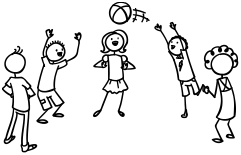
2. Ball pass questions
Get everybody standing in a circle.
Round 1:
Take a ball and hold it and ask, “How many tables are there?”.
Then throw the ball to a student who should give the answer,
then ask another “How many” question and throw to the next
student. Continue around all the students.
Round 2:
This time say, “Say food words”. Say a word (e.g. cheese) and throw to the next student.
Students keep throwing and saying food words within a short time limit (e.g. 3 seconds).
Failure to say a word in that time means the student sits down. Keep playing until only one
student is standing.

3. Homework check
Check each student’s homework that you set in the last lesson. Ask each student some questions about their homework worksheet (e.g. “What is this?, Is this a strawberry?”), give lots of praise, and then put some kind of mark on the homework sheet (e.g. a sticker, a stamp or draw a smiley face).
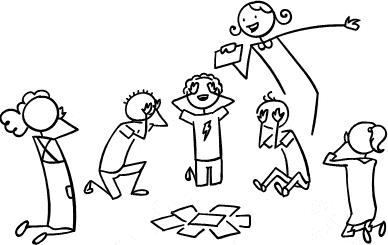
4. Play “Find the food”
Let’s review the last lesson’s food items. Place all the food flashcards face up on the floor, with everyone sitting around the cards. Give 10 seconds for everyone to remember where the flashcards are. Then say, “Close your eyes” and turn all the cards over. Tell everyone to open their eyes.
Students can work individually or in teams. Go around the class and point to a flashcard – can students remember what it is? Turn the card over to reveal the food item. If the student is correct, award 1 point. If incorrect, turn it back over again and move onto the next student.
The student/team with the most points is the winner!
New learning and practice:
1. Teach “Do you like …?”
At the top of your board write “Do you like …?”. Underneath draw a smiley face and a sad face. Next to them write “Yes, I do” and “No, I don’t”. Chorus the phrases 3x.
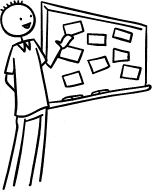
Then, with the help of your students, move the food flashcards from the floor and stick them around the board.
Then model with a volunteer student: point to a food flashcard and ask, “Do you like apples?”. Help the student say the correct answer. Then have the student ask you about one of the food items.
Have all your students stand up. Tell them to find a partner and ask one question each, then to find another partner to ask a different question, and so on, mingling around the classroom. Continue until everyone has meet each other.
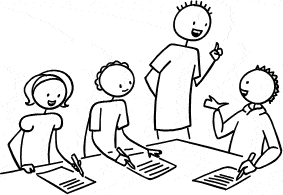
2. Do the “Do you like …?” worksheet
Hold up the worksheet and model writing the food words and “Yes, I do / No, I don’t” sentences onto the sheet. Have your students take out their pens/pencils and complete their worksheets. Spend time with each student, helping, asking questions and praising.
Finally, have each student hold up their completed worksheet and ask them a question about it. Tell your students to put their worksheets into their bags.
3. Read classroom reader “The hungry snake”
Before class, download and print off the reader “The hungry snake” from our website. As you go through each page, point to the pictures and elicit each food item, for example:
Teacher: What is the snake eating? (Pointing to page 2)
Students: Chocolate!
Teacher: Ok, let’s check … (reading) … “I like chocolate. Yummy! He finds some
chocolate and eats it all up. Do you like chocolate?” Do you like chocolate Stephan?
Stephan: Yes, I do.
Teacher: Good! I like chocolate too!
etc.
Get the students really involved in the story by asking lots of questions. Be sure to point out the snake’s tummy getting bigger on each page.

After reading the story, give out a reader worksheet to each student and have everyone draw lines to the food mentioned in the story. Then read through the story one more time (without stopping for questions, etc.) to check the answers as a class.
Alternatively, watch our video version of the reader (Internet connection required).
4. Make magazine food posters
Now everyone is going to make a poster showing the food and drink they like / dislike. You will need some supermarket magazines for this – many supermarkets have free magazines showing the food they have on sale – collect as many as you can before the lesson. Give each student a large piece of paper (construction paper or card, if possible), scissors, glue and a magazine (you can group students together to share magazines). On the paper, each student should write their name at the top and draw a table with two columns titled “I like …” and “I don’t like”. Then they can go through the magazines and cut out and glue food and drink pictures into the correct column on their posters.
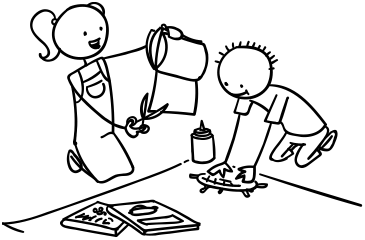
They should also write the words for each item next to the pictures (you may need to help with this). As the students are working, circulate, helping with vocabulary and spelling and ask questions (e.g. What’s this, Do you like ~ ?, etc.).
When everyone has finished, get student to pair up and show their posters to each other and explain what they like and dislike. As they do so they should also ask their partner if they like the food items, for example,
Student A: This is a peach. I like peaches. Do you like peaches?
Student B: Yes, I do.
etc.
Allow a few minutes and then get students to pair up with other students and do the activity again.
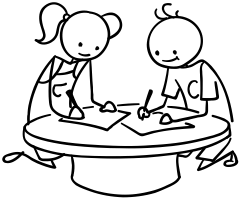
5. Read and write time
This segment can be part of all your lessons. Spend 10 to 15 minutes building up your students’ writing and reading skills. You’ll need to assess your students’ reading/writing level and then choose to start at one of the following stages:
1. Beginners: students cannot read or write the alphabet.
Each lesson introduce 3 lower-case letters of the alphabet (first lesson will be a, b, c). Use flashcards to do this. Play alphabet games and do printing worksheets.
» See our ‘Alphabet a-z (lowercase)’ mini-lesson plans for full details.
2. Early starters: students have experience with the alphabet but need phonics practice.
Each lesson introduce 5 lower-case letters of the alphabet (first lesson will be a, b, c, d, e). Use flashcards to do this. Start by working on the sounds of the letters and then move onto letter clusters (e.g. sh, ee, etc).
» See our ‘Alphabet’ and ‘Letter clusters’ mini-lesson plans for full details.
3. Early readers.
Work on reading and writing simple sentences with lots of practice activities.
» See our ‘Early reading’ mini-lesson plans for full details.
4. Elementary readers: students can read and write simple sentences well.
Work on reading and writing short texts and stories.
» See our ‘Reading short texts’ mini-lessons for full details.
6. Play the “Funny food likes & dislikes game”
This is a fun way to end the lesson. You will need put the class into groups of 3 or 4 and give each group a die and the “Funny food likes & dislikes game” handout (if you can, enlarging it to A3 size it would be better):
Instructions:
Before the game starts write the following on the board:
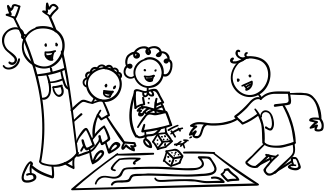
1. pizza
2. soup
3. ice cream
4. sandwich
5. juice
6. cake
- Play the game in groups of 3 or 4. Everyone sits around the game board. Decide who goes first and play in a clockwise direction around the game board.
- Player 1 rolls a die onto the game board paper. Look at which food item it lands on and the number of the die.
- The player must then make a sentence with the food item and using the number on the board. E.g. If the die lands on the cheese picture and number 3 s/he must say:
“I don’t like cheese ice cream!”
or
“I like cheese ice cream” (in this case, probably not!) - Cross out that picture with a pencil.
- The next player must roll the die. If the die lands on a crossed-out picture s/he misses a turn (also miss a turn if the die doesn’t land on a picture at all). If the die lands on a new picture, s/he must make another like / don’t like sentence.
- The game continues until all of the pictures are crossed out.
At the end of the game you can ask everyone to tell you the strangest thing they made a sentence about (e.g. “I don’t like hamburger ice cream!”)
Wrap up:

1. Assign homework: “Do you like questionnaire“
Hold up the homework worksheet and explain that your students are going to interview one of their family members for homework. Model asking a student a question – write the question and answer on the sheet. Give out the worksheets and say, “Put your homework in your bags”.
2. Do “Quick check” and say goodbye
Time to leave the class. Make sure everything is put away and the students have gathered their belongings. Have them line up at the door and place yourself between the door and the students.
For each student check one new word by holding up a food flashcard and asking, “Do you like ~?”.

When they give you the correct answer say goodbye and let them leave. If their answer is wrong, have them go back to the end of the line – they will have to try again once they reach the front!
Other lesson plans
Levels:
Level 1 lessons (Age 3-5)
Level 2 lessons (Age 5-7)
Level 3 lessons (Age 7-9)
Level 4 lessons (Age 9-12)
Mini lessons (all ages)
Lessons in this level:
- Intro lesson
- In the classroom 1
- In the classroom 2
- Likes and dislikes 1
- Likes and dislikes 2
- Weather
- Clothes and weather 1
- Clothes and weather 2
- Days of the week
- Daily routines & time 1
- Daily routines & time 2
- Daily routines & time 3
- Daily routines & time 4
- Ability and family 1
- Ability and family 2
- Body and family 1
- Body and family 2
- Pets and possessions 1
- Pets and possessions 2
- Months and seasons 1
- Months and seasons 2
- Months and seasons 3
- Describing people 1
- Describing people 2
- Describing things 1
- Describing things 2
Special lessons:
- Christmas lesson
- Halloween lesson
- Easter lesson
- Thanksgiving lesson


